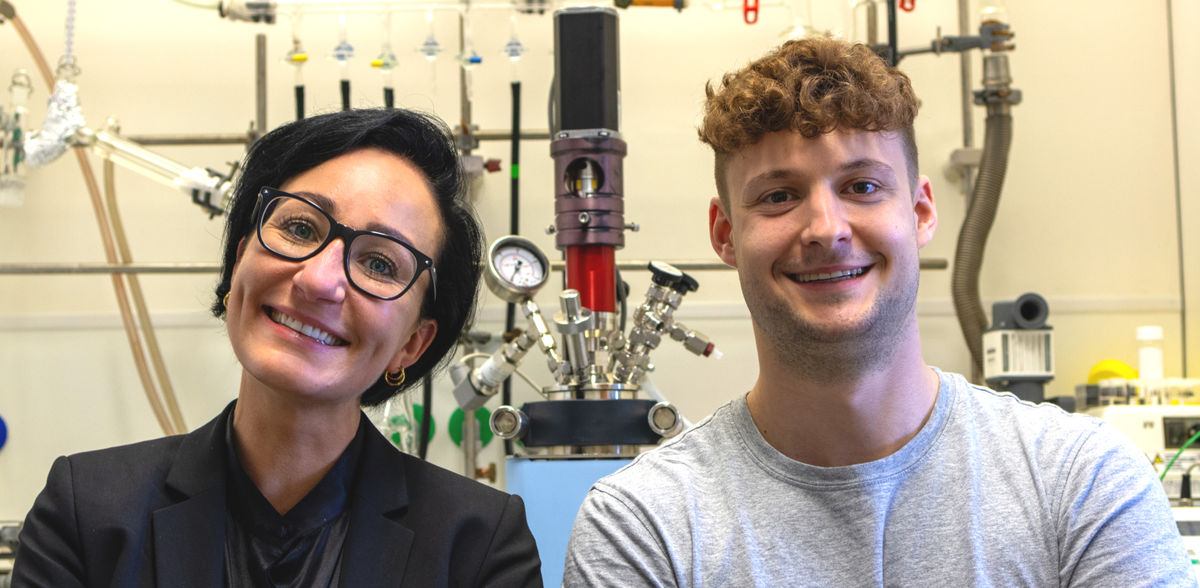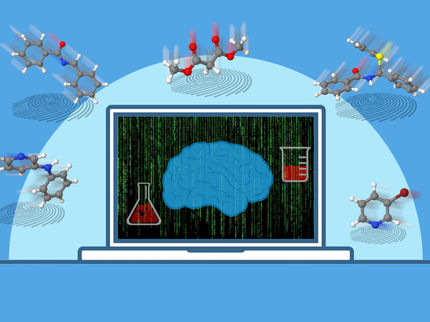Chemistry by type of stew
Can it be so easy to combine very different substances in a "one-pot synthesis" to create a new class of materials?
Chemists at the University of Konstanz describe how they have made a very unusual reaction possible.
An old dream of mankind is to combine the best of two worlds: to bring together the advantages of two opposing things without having to accept their disadvantages. This old dream is also being pursued in chemistry: how good would it be to combine the properties of organic and inorganic substances?
Organic substances stand for high functional diversity, while inorganic substances are very stable. The fact that chemists want to bring them together in the form of hybrid materials is nothing new. The only problem is that organic and inorganic substances require very different reaction conditions. You can't just throw them into a pot and stir them twice. Or can you? Prof. Dr. Miriam Unterlass' research group at the University of Konstanz has developed a process that can do just that: a "one-pot synthesis", as the chemists call the process, or rather a "one-pot synthesis".
"One-pot synthesis" means exactly what the name suggests: The very different reagents are not treated separately, but are all brought together in a common vessel. It is very important that the reactions of the different substance classes take place at the same time and synergistically. However, for this to work at all, the right balance must be found between the very different reaction conditions. This is very tricky and requires a lot of laboratory work, but as the chemists in Constance show, it can be very easy with the "right recipe".
The right cooking point
"The beauty of our approach lies in its simplicity," emphasizes Frank Sailer, who was instrumental in developing the one-pot synthesis in his doctoral thesis. "Just like a stew, you have to find the right cooking point so that the lentils have not yet disintegrated, but the potatoes are already cooked through." Applied to chemical reactions, this means You need the right ratio of pressure, temperature and time. And, of course, the right ingredients.
"We don't need any toxic catalysts or solvents," says Sailer, citing the advantages of the process - it is therefore sustainable and environmentally friendly. The only solvent used is pure isopropanol (the main component of disinfectants), which is harmless and available in large quantities. The main ingredients of the new material class are special dye molecules, so-called pigments, and layered titanium dioxide.
If it is so simple, why wasn't this reaction process discovered long ago? "Because the idea is very unusual. The organic components are not normally synthesized under such conditions," explains Sailer. Finding such reaction pathways is a declared goal of Miriam Unterlass' working group: she is investigating how chemical synthesis processes can be optimized by choosing the right framework conditions and lead to better, more sustainable results. "We produce better materials in a faster and more environmentally friendly way," explains Miriam Unterlass.
The best of both worlds?
So is it the best of both worlds that has come out of one-pot synthesis? Strictly speaking, it is much more than that. "We don't just want a sum of the properties, but a synergetic interaction," explains Frank Sailer, "new properties that the two starting materials don't have." The new class of material that Sailer and his colleagues have created is virtually predestined for batteries due to its layered structure. The name of the new material class: Pigments@TiO2.
Note: This article has been translated using a computer system without human intervention. LUMITOS offers these automatic translations to present a wider range of current news. Since this article has been translated with automatic translation, it is possible that it contains errors in vocabulary, syntax or grammar. The original article in German can be found here.
Original publication
Other news from the department science
Most read news
More news from our other portals
See the theme worlds for related content
Topic world Synthesis
Chemical synthesis is at the heart of modern chemistry and enables the targeted production of molecules with specific properties. By combining starting materials in defined reaction conditions, chemists can create a wide range of compounds, from simple molecules to complex active ingredients.

Topic world Synthesis
Chemical synthesis is at the heart of modern chemistry and enables the targeted production of molecules with specific properties. By combining starting materials in defined reaction conditions, chemists can create a wide range of compounds, from simple molecules to complex active ingredients.































































